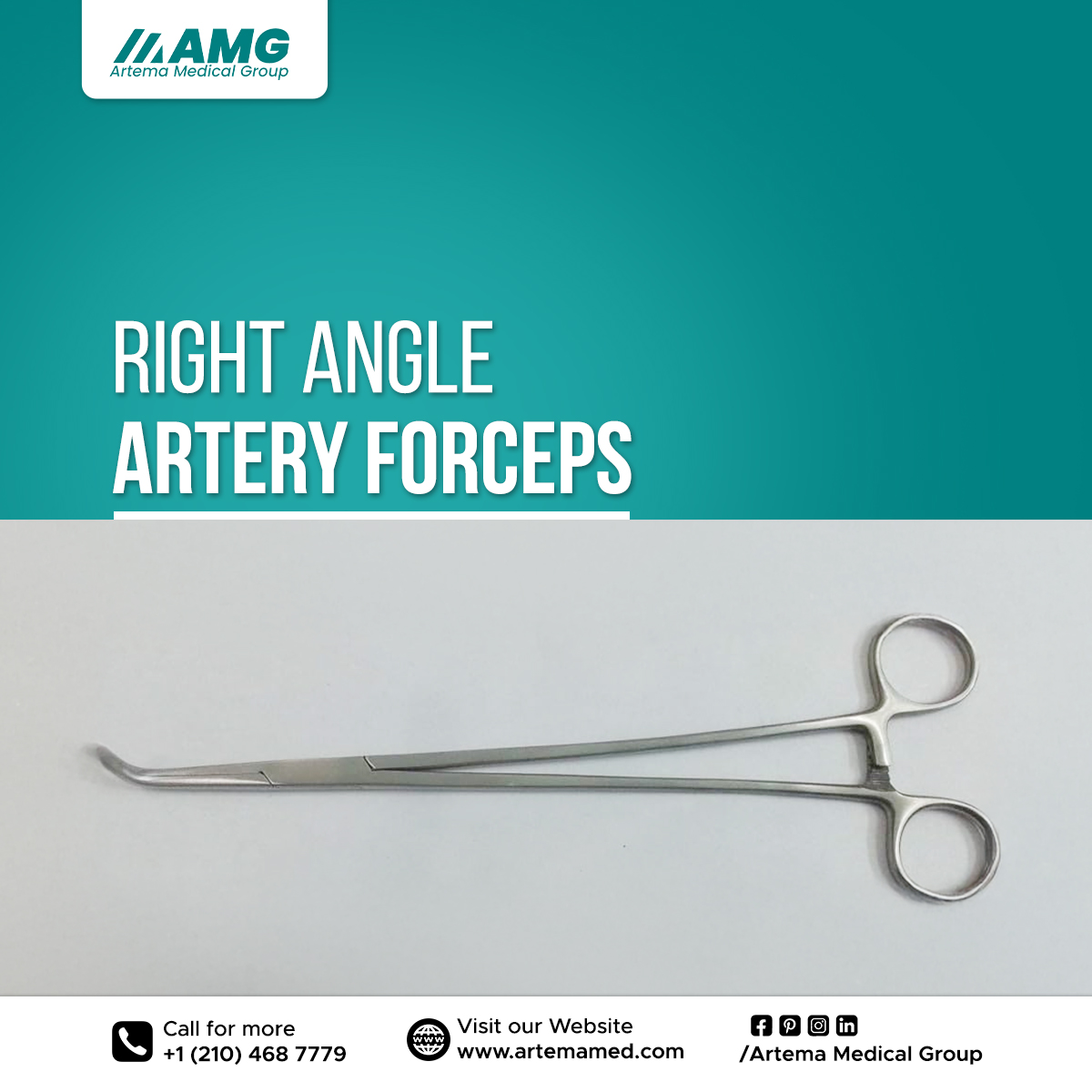Right angle artery forceps are among the most dependable tools in modern surgical practice. Known for their precision, strength, and ergonomic design, these forceps are specially designed to reach deep or narrow anatomical areas that are often hard to access with straight instruments. Their primary function is to clamp blood vessels to control bleeding and guide sutures during operations. However, their use goes far beyond basic clamping.
Understanding the key features of right angle artery forceps helps surgeons select the best tools for delicate and complex procedures. These features make the instrument not only effective but also essential for successful surgical outcomes.
Angled Tip for Enhanced Accessibility
One of the most prominent features of right angle artery forceps is their 90-degree angled tip. This unique shape allows the instrument to access tight, curved, or deep spaces within the body. Surgeons often face challenges when working near organs, blood vessels, or bones. The angled tip solves this by offering a clear pathway to hard-to-reach areas, improving access without the need for additional incisions or extended dissection.
This design is especially useful in surgeries involving the neck, thorax, pelvis, or abdomen, where visibility and reach are limited. The angle also makes it easier to pass ligatures around vessels or guide instruments without disrupting surrounding tissues.
Fine Serrated Jaws for Secure Grip
Another essential feature is the presence of finely serrated jaws at the tip of the forceps. These serrations provide a strong and secure grip on blood vessels and tissues without slipping. The grip ensures that the vessel stays clamped firmly, preventing blood leakage during surgery.
The jaw alignment and smooth inner surfaces are engineered to apply uniform pressure, minimizing the risk of crushing delicate structures. This makes the instrument ideal for surgeries requiring precision, such as cardiovascular and neurosurgical procedures.
Ratchet Lock Mechanism for Controlled Clamping
Right angle artery forceps come equipped with a reliable ratchet lock mechanism. This system allows the surgeon to lock the forceps in place after clamping a vessel. The locking mechanism has multiple levels, enabling surgeons to adjust the pressure according to the tissue type and surgical requirement.
This feature provides hands-free control, allowing the surgeon to focus on other tasks during the operation. It also ensures that once clamped, the vessel remains sealed until the surgeon decides to release it. This controlled pressure reduces trauma and improves safety during procedures.
Stainless Steel Construction for Durability
Most right angle artery forceps are made from high-quality surgical-grade stainless steel. This material is corrosion-resistant, easy to sterilize, and capable of withstanding repeated use. Stainless steel maintains its structural integrity and sharpness over time, ensuring long-lasting performance in clinical settings.
The smooth finish and non-reactive properties of stainless steel make the forceps safe for use inside the body. They are also compatible with autoclaving, the standard method of sterilization in hospitals and clinics.
Ergonomic Handles for Comfortable Use
Comfort is crucial during lengthy surgical procedures. Right angle artery forceps are designed with ergonomically shaped handles that provide a comfortable grip. The handles allow the surgeon to apply pressure with minimal hand fatigue. This improves control and accuracy during complex tasks.
The balance and weight of the instrument are carefully adjusted to reduce strain on the hands and wrists. This ergonomic feature enhances performance and reduces the chance of accidental slips or mistakes during surgery.
Versatility Across Multiple Surgical Specialties
One of the standout features of right angle artery forceps is their wide range of applications. These instruments are used in general surgery, vascular procedures, cardiothoracic surgeries, orthopedic operations, and even in dental and ENT practices.
Their ability to clamp, dissect, and guide sutures makes them incredibly versatile. Surgeons can rely on them for tasks such as exploring wounds, separating tissues, or handling vessels during deep dissection.
Available in Different Sizes and Lengths
To suit various surgical needs, right angle artery forceps are available in different sizes and lengths. Shorter forceps are used for surface-level or pediatric procedures, while longer ones are ideal for deep cavity work. The availability of multiple lengths ensures that surgeons can choose the most appropriate instrument based on the anatomical location and surgical requirements.
This feature supports better maneuverability and precision, especially in cases where every millimeter of movement counts.
Blunt Dissection Capability
In addition to clamping, right angle artery forceps can be used for blunt dissection. Surgeons use the closed tips to gently push or separate tissues without cutting. This technique is beneficial in reducing trauma to the surrounding structures. It helps create a surgical plane or pathway, particularly in procedures where sharp dissection may be too risky.
Easy Maintenance and Reusability
Due to their stainless steel design and sturdy build, these forceps are easy to maintain. They can be sterilized multiple times without affecting performance. With proper care, they can last for years, making them a cost-effective investment for hospitals and surgical centers.
Reusable instruments not only save money but also support environmentally friendly surgical practices.
Conclusion
Right angle artery forceps are a staple in surgical instrument sets due to their outstanding design and functionality. From their angled tips and fine serrated jaws to their ergonomic handles and durable material, every feature contributes to better surgical outcomes. These instruments ensure safety, control, and precision, even in the most challenging procedures.
For premium-quality right angle artery forceps and a wide range of surgical tools, Artema Med is a trusted provider serving the needs of medical professionals around the world.



